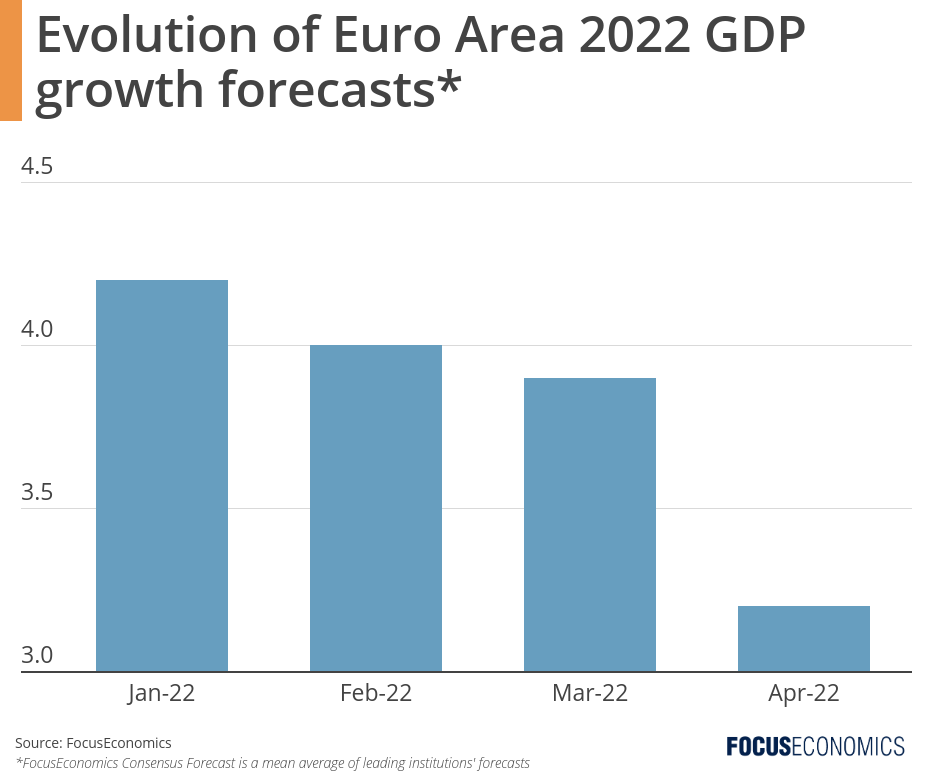
Recent geopolitical developments are likely to add further downward pressure to the economy in the months ahead. In early April, the EU announced a fifth round of sanctions hitting coal imports and transport from Russia, and proposed targeting Russian oil imports in the future, which will likely feed through into even higher price pressures. Russia continues to threaten to choke gas supplies to Europe unless payments are made in rubles. And China has locked down its financial hub Shanghai due to Covid-19, posing a risk to external demand—China is the EU’s third largest export market.
A Russia-Ukraine peace settlement is vital in order for economic prospects in the Euro Area to brighten. Even then, sanctions on Russia would likely continue—taking the edge off momentum. Plus, a desire to pivot away from Russian energy could translate into durably higher price pressures in the medium term. That said, there are still some reasons for optimism. Underlying economic conditions pre-war were healthy. The influx of refugees will boost demand. And extra government spending on defense, inflation mitigation and the energy sector will also support activity. The Euro Area’s outlook has certainly darkened—but it is not yet total gloom.
Insights from Our Analyst Network
Commenting on recent economic developments, analysts at Goldman Sachs noted:
“The March prints of consumer confidence surveys as well as the early April Sentix survey all decreased sharply, pointing to downside risks for consumer activity going forward as uncertainty and inflationary pressures start to weigh on households’ confidence and real disposable incomes. Overall, the negative spill-overs from the conflict appear to be materialising most prominently through supply-chain disruptions and via the impact on consumer sentiment, while gas flows from Russia to Europe—disruptions of which would have the most significant ramifications for European growth—remain uninterrupted so far.”
Commenting on the inflation outlook, analysts at Swedbank noted:
“The Brent oil price is expected to average USD 110/barrel during Q2 before slowly declining to USD 106/barrel at the end of 2022 and to continue down to USD 100/barrel towards the end of 2023. In turn, this would imply that inflation is about to peak soon in many countries, although moderating only gradually. Indirect effects, e.g., firms passing on higher costs to consumers, will keep consumer price inflation higher than normal for a while yet. There are plenty of risks to our forecast. Overall, we deem the risks unbalanced, with a higher likelihood for a worse outcome than a better one.”